Lägenhet
Cortina 2-24 Comfortable two-room apartment facing the sea
Lägenhet med pentry och balkong i Comacchio
Fotogalleri för Cortina 2-24 Comfortable two-room apartment facing the sea
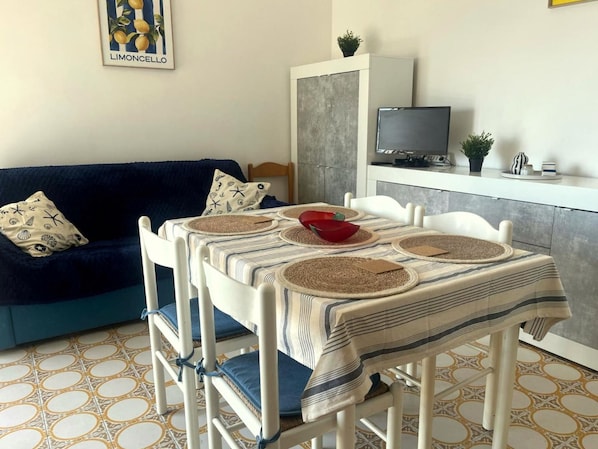
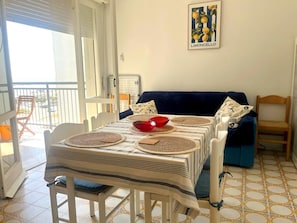
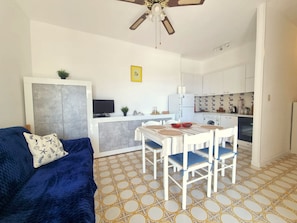
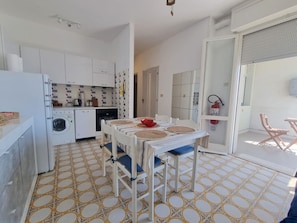
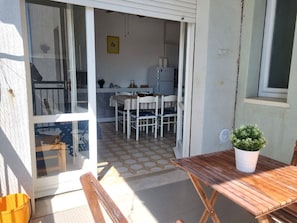
Recensioner
8,4 av 10,
Mycket bra
1 sovrum1 badrumSovplats för 545 kvm
Populära bekvämligheter
Utforska området

Comacchio, Ferrara
- Place, Circuito di Pomposa4 min med bil
- Place, Valle di Comacchio6 min med bil
- Place, Po Delta-parken10 min med bil
Rum och sängar
1 sovrum (sovplats för 5)
Sovrum 1
2 enkelsängar
1 badrum
Badrum 1
Toalett · Endast dusch
Ytterligare utrymmen
Pentry
Balkong
Om boendet
Cortina 2-24 Comfortable two-room apartment facing the sea
We offer for rent this lovely two-room holiday home in Lido di Pomposa, located on the 4th floor in a seafront condominium with elevator, a stone's throw from the main avenue that becomes pedestrian on summer evenings, close to all services. The house has been partially renovated and is composed as follows: a living room with a balcony overlooking the sea, a double sofa bed, TV with satellite decoder, kitchenette with induction hob and dishwasher, double bedroom + single bed, bathroom, washing machine, air conditioning.
Comacchio is about 10 km away and is the most original and fascinating historical center in Po Delta Park.
Origin of the ancient Spina, long controversial from Ferrara and Ravenna, by the Popes and Emperors, has ancient origins: it rises in fact at the dawn of the Middle Ages, when the initial settlement settled on a chain of islets emerging in the evergreen mouth of the Padana.
Fishing, shellfish, salt production were the source of its flourishingness and its overturns, due to the conflicts that opposed it to Venice. After the Estense era, during the Pontifical State, the city revived, so much so that the happiest architectural and monumental interventions dates back to the sixth-eighteenth century.
Now Comacchio is a lagoon town that enchants: it is gentle and genuine, with a vitality that is lymph in respect to its own history and the desire to valorize it. A widespread reminder remembers the proximity to the sea, whose light fills the urban spaces, even more potentiated by the quiet areas of the canals.
The town of Comacchio and its valleys represent the "heart" of the Delta, are in fact the green lungs of the whole Adriatic coast from Chioggia to Cattolica. The Comacchio Lagoon are the real museum and represent one of the most important lagoon complexes in Italy and Europe. They extend to the provinces of Ferrara and partly to Ravenna, for more than 11,000 hectares, between Comacchio and the River Reno, and are connected to the sea through the channels of Magnavacca, Logonovo, Bellocchio and Gobbino. Formations of brackish water, they represent an important biotope of brackish water wet zone, made up of extreme alofil vegetation and declared of international interest, according to the Ramsar Convention of 1971.
Around the lagoon the historical and economic history of Comacchio has been centered and developed; this is an almost unique example of integration between the natural environment and human activity, where salt production and fisheries have always represented the primary economic bases, to which local craftsmanship was predominantly linked, being almost agriculture is absent and tourism is completely lacking. These latest economic components have developed almost simultaneously with the reclamation and draining of thousands of acres of lagoon, leaving unchanged that part of which is still practiced especially eel fishing with special instruments named Lavoriero.
The total surface is formed by the lagoon "Fossa di Porto" (including Zavelea oasis), "Lido di Magnavacca", "Fattibello" (which in the past was not far used for fishing as a daily livelihood) and "Campo"; has a morphology articulated because of:
artificial crevices created to delineate the catchment basins of the bush, barene and ancient dunosis emerging from the waters.
Boscoforte Peninsula is a very suggestive sandy tongue, extending from the Reno River between the lagoon "Fossa di Porto" and "Lido di Magnavacca" for a length of 6 km, formed by the expanse of a dune-coastal cordon of the Etruscan period.
We offer for rent this lovely two-room holiday home in Lido di Pomposa, located on the 4th floor in a seafront condominium with elevator, a stone's throw from the main avenue that becomes pedestrian on summer evenings, close to all services. The house has been partially renovated and is composed as follows: a living room with a balcony overlooking the sea, a double sofa bed, TV with satellite decoder, kitchenette with induction hob and dishwasher, double bedroom + single bed, bathroom, washing machine, air conditioning.
Comacchio is about 10 km away and is the most original and fascinating historical center in Po Delta Park.
Origin of the ancient Spina, long controversial from Ferrara and Ravenna, by the Popes and Emperors, has ancient origins: it rises in fact at the dawn of the Middle Ages, when the initial settlement settled on a chain of islets emerging in the evergreen mouth of the Padana.
Fishing, shellfish, salt production were the source of its flourishingness and its overturns, due to the conflicts that opposed it to Venice. After the Estense era, during the Pontifical State, the city revived, so much so that the happiest architectural and monumental interventions dates back to the sixth-eighteenth century.
Now Comacchio is a lagoon town that enchants: it is gentle and genuine, with a vitality that is lymph in respect to its own history and the desire to valorize it. A widespread reminder remembers the proximity to the sea, whose light fills the urban spaces, even more potentiated by the quiet areas of the canals.
The town of Comacchio and its valleys represent the "heart" of the Delta, are in fact the green lungs of the whole Adriatic coast from Chioggia to Cattolica. The Comacchio Lagoon are the real museum and represent one of the most important lagoon complexes in Italy and Europe. They extend to the provinces of Ferrara and partly to Ravenna, for more than 11,000 hectares, between Comacchio and the River Reno, and are connected to the sea through the channels of Magnavacca, Logonovo, Bellocchio and Gobbino. Formations of brackish water, they represent an important biotope of brackish water wet zone, made up of extreme alofil vegetation and declared of international interest, according to the Ramsar Convention of 1971.
Around the lagoon the historical and economic history of Comacchio has been centered and developed; this is an almost unique example of integration between the natural environment and human activity, where salt production and fisheries have always represented the primary economic bases, to which local craftsmanship was predominantly linked, being almost agriculture is absent and tourism is completely lacking. These latest economic components have developed almost simultaneously with the reclamation and draining of thousands of acres of lagoon, leaving unchanged that part of which is still practiced especially eel fishing with special instruments named Lavoriero.
The total surface is formed by the lagoon "Fossa di Porto" (including Zavelea oasis), "Lido di Magnavacca", "Fattibello" (which in the past was not far used for fishing as a daily livelihood) and "Campo"; has a morphology articulated because of:
artificial crevices created to delineate the catchment basins of the bush, barene and ancient dunosis emerging from the waters.
Boscoforte Peninsula is a very suggestive sandy tongue, extending from the Reno River between the lagoon "Fossa di Porto" and "Lido di Magnavacca" for a length of 6 km, formed by the expanse of a dune-coastal cordon of the Etruscan period.
Comacchio is about 10 km away and is the most original and fascinating historical center in Po Delta Park.
Origin of the ancient Spina, long controversial from Ferrara and Ravenna, by the Popes and Emperors, has ancient origins: it rises in fact at the dawn of the Middle Ages, when the initial settlement settled on a chain of islets emerging in the evergreen mouth of the Padana.
Fishing, shellfish, salt production were the source of its flourishingness and its overturns, due to the conflicts that opposed it to Venice. After the Estense era, during the Pontifical State, the city revived, so much so that the happiest architectural and monumental interventions dates back to the sixth-eighteenth century.
Now Comacchio is a lagoon town that enchants: it is gentle and genuine, with a vitality that is lymph in respect to its own history and the desire to valorize it. A widespread reminder remembers the proximity to the sea, whose light fills the urban spaces, even more potentiated by the quiet areas of the canals.
The town of Comacchio and its valleys represent the "heart" of the Delta, are in fact the green lungs of the whole Adriatic coast from Chioggia to Cattolica. The Comacchio Lagoon are the real museum and represent one of the most important lagoon complexes in Italy and Europe. They extend to the provinces of Ferrara and partly to Ravenna, for more than 11,000 hectares, between Comacchio and the River Reno, and are connected to the sea through the channels of Magnavacca, Logonovo, Bellocchio and Gobbino. Formations of brackish water, they represent an important biotope of brackish water wet zone, made up of extreme alofil vegetation and declared of international interest, according to the Ramsar Convention of 1971.
Around the lagoon the historical and economic history of Comacchio has been centered and developed; this is an almost unique example of integration between the natural environment and human activity, where salt production and fisheries have always represented the primary economic bases, to which local craftsmanship was predominantly linked, being almost agriculture is absent and tourism is completely lacking. These latest economic components have developed almost simultaneously with the reclamation and draining of thousands of acres of lagoon, leaving unchanged that part of which is still practiced especially eel fishing with special instruments named Lavoriero.
The total surface is formed by the lagoon "Fossa di Porto" (including Zavelea oasis), "Lido di Magnavacca", "Fattibello" (which in the past was not far used for fishing as a daily livelihood) and "Campo"; has a morphology articulated because of:
artificial crevices created to delineate the catchment basins of the bush, barene and ancient dunosis emerging from the waters.
Boscoforte Peninsula is a very suggestive sandy tongue, extending from the Reno River between the lagoon "Fossa di Porto" and "Lido di Magnavacca" for a length of 6 km, formed by the expanse of a dune-coastal cordon of the Etruscan period.
We offer for rent this lovely two-room holiday home in Lido di Pomposa, located on the 4th floor in a seafront condominium with elevator, a stone's throw from the main avenue that becomes pedestrian on summer evenings, close to all services. The house has been partially renovated and is composed as follows: a living room with a balcony overlooking the sea, a double sofa bed, TV with satellite decoder, kitchenette with induction hob and dishwasher, double bedroom + single bed, bathroom, washing machine, air conditioning.
Comacchio is about 10 km away and is the most original and fascinating historical center in Po Delta Park.
Origin of the ancient Spina, long controversial from Ferrara and Ravenna, by the Popes and Emperors, has ancient origins: it rises in fact at the dawn of the Middle Ages, when the initial settlement settled on a chain of islets emerging in the evergreen mouth of the Padana.
Fishing, shellfish, salt production were the source of its flourishingness and its overturns, due to the conflicts that opposed it to Venice. After the Estense era, during the Pontifical State, the city revived, so much so that the happiest architectural and monumental interventions dates back to the sixth-eighteenth century.
Now Comacchio is a lagoon town that enchants: it is gentle and genuine, with a vitality that is lymph in respect to its own history and the desire to valorize it. A widespread reminder remembers the proximity to the sea, whose light fills the urban spaces, even more potentiated by the quiet areas of the canals.
The town of Comacchio and its valleys represent the "heart" of the Delta, are in fact the green lungs of the whole Adriatic coast from Chioggia to Cattolica. The Comacchio Lagoon are the real museum and represent one of the most important lagoon complexes in Italy and Europe. They extend to the provinces of Ferrara and partly to Ravenna, for more than 11,000 hectares, between Comacchio and the River Reno, and are connected to the sea through the channels of Magnavacca, Logonovo, Bellocchio and Gobbino. Formations of brackish water, they represent an important biotope of brackish water wet zone, made up of extreme alofil vegetation and declared of international interest, according to the Ramsar Convention of 1971.
Around the lagoon the historical and economic history of Comacchio has been centered and developed; this is an almost unique example of integration between the natural environment and human activity, where salt production and fisheries have always represented the primary economic bases, to which local craftsmanship was predominantly linked, being almost agriculture is absent and tourism is completely lacking. These latest economic components have developed almost simultaneously with the reclamation and draining of thousands of acres of lagoon, leaving unchanged that part of which is still practiced especially eel fishing with special instruments named Lavoriero.
The total surface is formed by the lagoon "Fossa di Porto" (including Zavelea oasis), "Lido di Magnavacca", "Fattibello" (which in the past was not far used for fishing as a daily livelihood) and "Campo"; has a morphology articulated because of:
artificial crevices created to delineate the catchment basins of the bush, barene and ancient dunosis emerging from the waters.
Boscoforte Peninsula is a very suggestive sandy tongue, extending from the Reno River between the lagoon "Fossa di Porto" and "Lido di Magnavacca" for a length of 6 km, formed by the expanse of a dune-coastal cordon of the Etruscan period.
Lägg till datum för priser
Bekvämligheter
Kök
Tvättmaskin
Torktumlare
Husdjursvänligt
Luftkonditionering
Liknande boenden
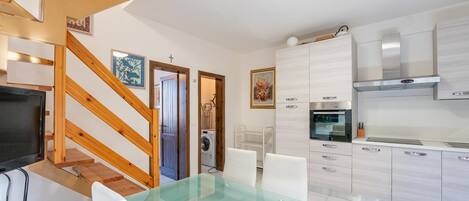
LARGE FOUR-ROOM APARTMENT FOR RENT ON TWO LEVELS - IN LIDO ESTENSI - WITH TERRACE
LARGE FOUR-ROOM APARTMENT FOR RENT ON TWO LEVELS - IN LIDO ESTENSI - WITH TERRACE
- Tvättmaskin
- Uteplats
Husregler
Incheckning efter 15.00
Utcheckning före 10.00
Barn
Barn tillåts: 0–17 år
Evenemang
Inga evenemang tillåts
Husdjur
Husdjur tillåts
Rökning tillåten
Rökning förbjuden
Viktig information
Att hålla koll på
Detta boende drivs av en professionell värd. Att erbjuda boende är kopplat till värdens företagsverksamhet eller yrke.
Avgifter för extragäster kan tillkomma och varierar i enlighet med boendets policy.
Statligt utfärdad fotolegitimation och kreditkort, bankkort eller kontantdeposition kan krävas vid incheckning för oförutsedda utgifter.
Särskilda önskemål erbjuds i mån av tillgång vid incheckning och kan medföra ytterligare avgifter. Särskilda önskemål kan inte garanteras.
Boendet accepterar kontanter.
Fester och gruppevenemang är inte tillåtna på boendet.
Värden har angett att det inte finns någon kolmonoxidvarnare eller några gasdrivna apparater på boendet.
Värden har angett att det finns en rökdetektor på boendet.
På detta boende finns bland annat följande säkerhetsdetalj: brandsläckare.
Om du avbokar din bokning kommer värdens avbokningspolicy att gälla. I enlighet med EU-bestämmelser om konsumenträtt gäller inte ångerrätten för boendebokningstjänster.
Bra att veta
Alla gäster, även barn, måste vara närvarande vid incheckning och uppvisa statligt utfärdad legitimation eller pass.
Kontanttransaktioner på boendet får inte överstiga EUR 5000, på grund av statliga bestämmelser. Du kan få mer information genom att kontakta boendet via kontaktuppgifterna i bokningsbekräftelsen.
Om området
Comacchio
denna lägenhet ligger i Comacchio. Museo Delta Antico och Manifattura dei Marinati tillhör de kulturella höjdpunkterna, och bland områdets sevärdheter hittar du Trepponti bro och Santuario di Santa Maria in Aula Regia. Circuito di Pomposa och Bosco de la Mesola är också värda ett besök.

Comacchio, Ferrara
I närheten
- Circuito di Pomposa - 4 min med bil - 2.9 km
- Valle di Comacchio - 6 min med bil - 4.3 km
- Trepponti bro - 10 min med bil - 7.5 km
- Po Delta-parken - 10 min med bil - 7.5 km
- Museo Delta Antico - 11 min med bil - 7.9 km
Ta sig runt
Restauranger
- Pizzeria La Pace - 18 min till fots
- Ristorante Pizzeria Sonia - 7 min till fots
- Bar Bagno Giada - 4 min med bil
- Tana Del Luppolo - 2 min till fots
- Opera Viva - 3 min med bil
Vanliga frågor och svar
Om värden
Roberto Cavalieri är värd
Språk:
Engelska, Italienska, Portugisiska
Har du några förslag på hur vi kan förbättra sidan?Ge feedback

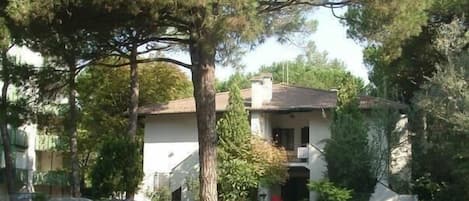



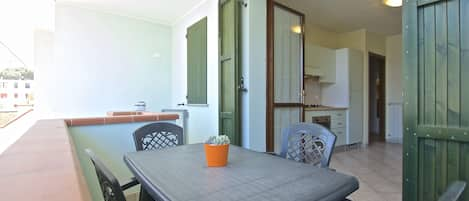
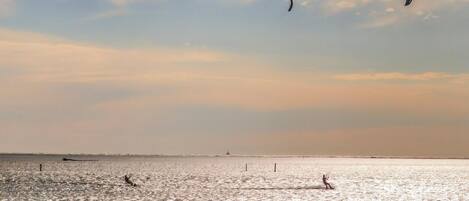



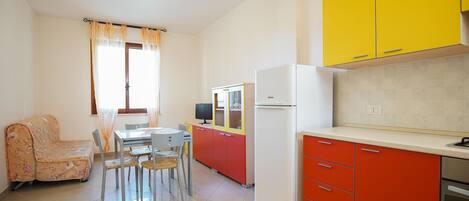
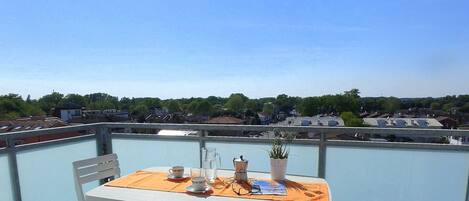
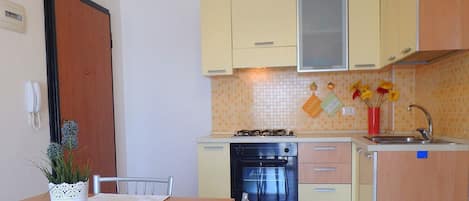
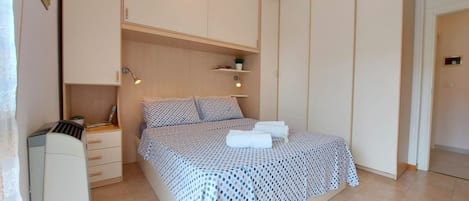

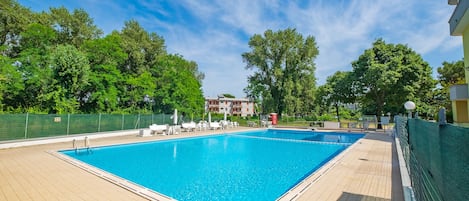





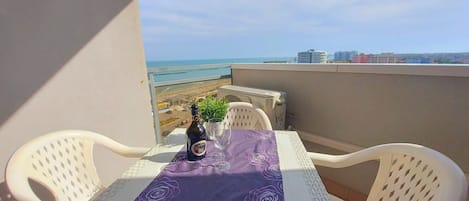

![Stugans exteriör [sommar]](https://media.vrbo.com/lodging/75000000/74490000/74490000/74489934/ca382e70.jpg?impolicy=fcrop&w=469&h=201&p=1&q=medium)

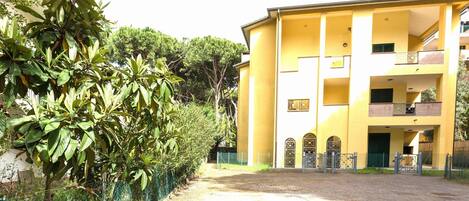
![Stugans exteriör [sommar]](https://media.vrbo.com/lodging/75000000/74490000/74490000/74489931/8bcacea4.jpg?impolicy=fcrop&w=469&h=201&p=1&q=medium)

